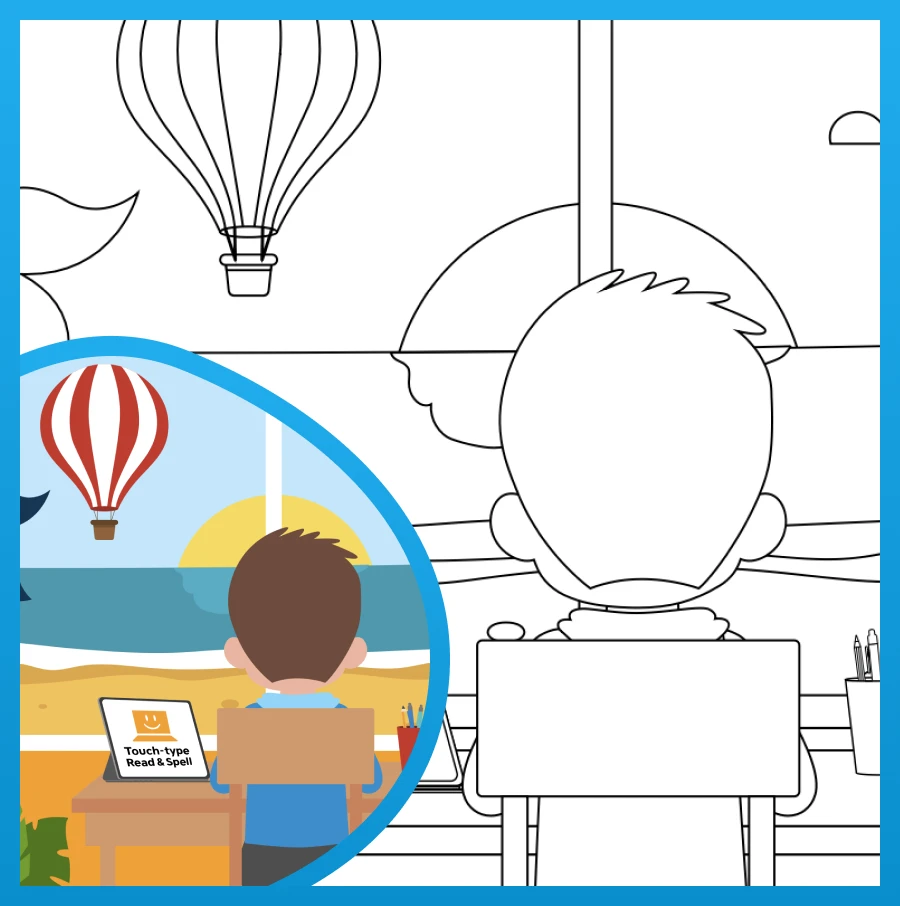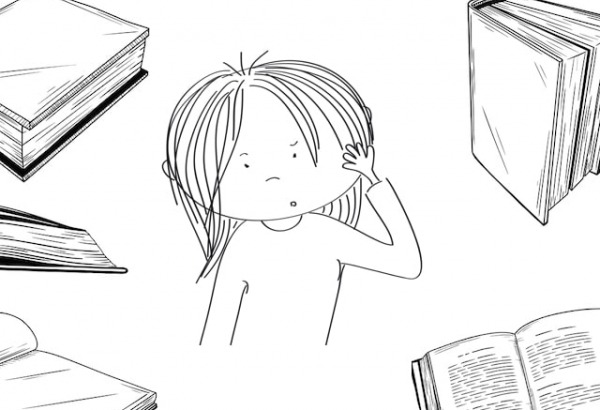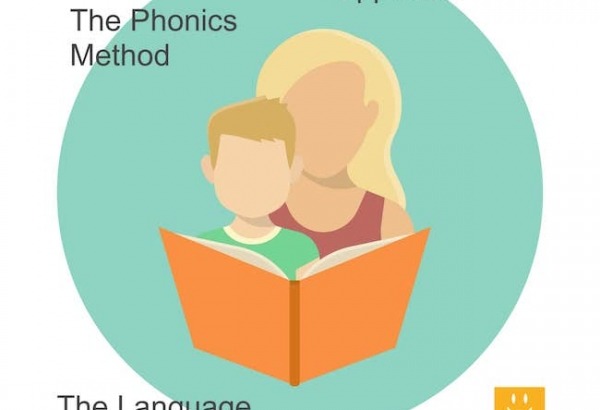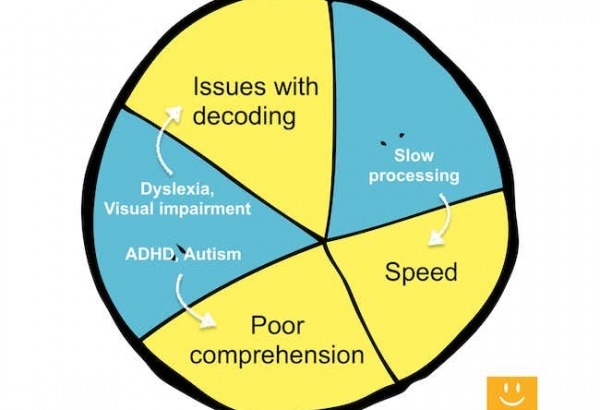3 Reading aids for kids
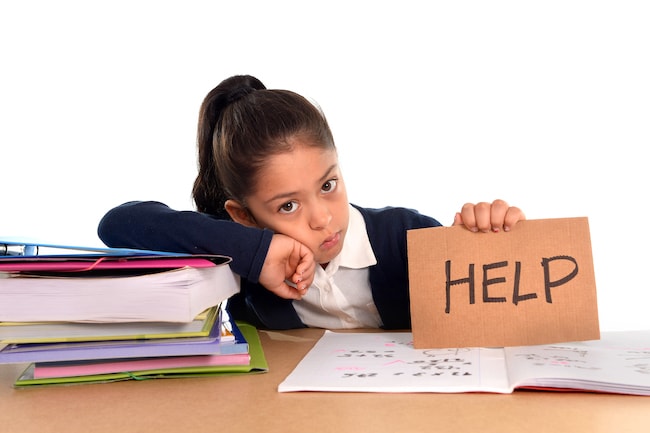
Reading is a crucial skill for children to master. Not only does it ensure success at school when classroom learning moves from learning to read to reading to learn, but it’s also critical for career success later on in life.
It is through reading that children acquire most of their vocabulary. It’s also an opportunity for parents and teachers to expand a child’s view of the world. Non-fiction introduces them to new subjects and fiction develops social-reasoning skills and empathy.
How a child develops literacy skills depends on a number of factors, including the individual, their early exposure to written text, the frequency with which they read, their vocabulary size, and the presence or lack of certain learning difficulties which can affect language processing – for example dyslexia is one of the main causes of reading difficulties.
What we know is that some kids struggle with reading long after their peers have mastered the skill. In fact, a 2015 Report from the UK Department of Education suggests that 1 in 5 children in England are reading at below grade-level (1). So what can parents do to help?
3 Ways to help with reading
Just because a child is behind his or her peers, it does not necessarily mean they won’t catch up. There are many kinds of support parents can provide to help the process along.
- Support can come in the form of purposely chosen reading materials which make understanding a text easier. For example, graded readers are books with a lower range of vocabulary and glossed word-banks that provide definitions.
- A child may need an alternative approach to learning to read -- some children benefit from phonics driven exercises which strengthen their knowledge of sound-letter correspondence in English. This is especially true for kids who have dyslexia. Others find multi-sensory learning helps.
- Being exposed to high-frequency vocabulary and learning to sight read these words through regular drills can speed up processing and boost comprehension for struggling readers.

What makes reading hard
Processing written text can take a long time and be a halting and frustrating experience or it can be relatively quick and feel effortless. In order to provide the right support, teachers and parents first need to pinpoint the source of the difficulty.
Problems with decoding
To read a word, children need to have knowledge of letter forms. When a child has a visual processing difficulty, just recognizing letter symbols and registering the order in which they appear can be problematic.
Readers need to pair letters and letter combinations with the correct sound(s) – which is not always straightforward in English due to irregular spelling.
Any difficulties splitting words into their component sounds can greatly complicate decoding – as is often the case for individuals who struggle with dyslexia. It can also be harder to decode words when a child has a more limited vocabulary and is meeting the word for the first time (2).
Sight reading difficulty
Early readers rely primarily on decoding, but more fluent readers recognize words instantaneously. This is especially true of high-frequency words which they are exposed to often (3).
Automatically registering word-meaning frees up attention and makes reading faster and more efficient.
Parents may note a child who is struggling with sight reading often takes longer and is more tired going through a text. It’s harder for them to make sense of complicated meaning as they have little processing power left-over to deal with higher-order reasoning.
Trouble with comprehension
To understand what they are reading, a child first needs to be familiar with most of the words in a text.
When a learner has a more limited spoken vocabulary or decodes words incorrectly, as in dyslexia, it can cause problems with comprehension because it means there will effectively be more blanks in every sentence.
Some children frequently lose their place on a page and/or have difficulty concentrating for long amounts of time. This can affect comprehension and cause them to misread certain bits or miss important referents. Learn more about ADHD related reading difficulties.
Problems with working memory can mean some kids need to read a paragraph several times in order to understand it. You might see this in a child with slow-processing or in readers who have dyslexia. This can be demotivating and cause an individual to consider reading a tedious activity.

Top tips and strategies for helping a child to read
-
Make use of graded readers. Parents can go out of their way to choose a particular type of reading material. Graded readers are written with a more limited range of vocabulary and often include a large percentage of high-frequency words. They encourage sight reading and are read faster, which boosts confidence in new readers.
-
Teach vocabulary. Certain texts will provide glossed vocabulary lists. If parents teach the words a child will read both before, during and after text presentation, comprehension is facilitated because it ensures there will be fewer "blanks" in every sentence. Rereading is also a great way to help these words "stick" and transfer from short to long-term memory thanks to repeat exposure.
-
Run pre-reading activities. A good pre-reading activity will activate a child’s prior knowledge of a topic and present key vocabulary, which primes them for reading and ensures they will take more away from the text. If parents can come up with something that relates the reading back to a child’s personal life and experiences, even better!
-
Provide phonics support. English is a notoriously difficult language to read given the lack of one to one correspondence in letters and sounds and the number of different ways a sound can be written. Introducing a program that teaches English phonics can help kids improve their decoding skills, which in turn positively affects reading fluency and comprehension. Parents have the option to choose between a program that teaches phonics knowledge explicitly (which can be tedious) or one that builds an intuitive sense of phonics through carefully sequenced content.
-
Implement sensory-based accommodations. Have new readers use a ruler that they physically move down the page to help them keep their place. Parents may also encourage kids to use their finger to follow along, or tap out the rhythm of the words as they read aloud. Technology can create opportunities for multi-modal reading too. For example, you may have them listen to a text being spoken and read along at the same time or type out the words as they are read.
-
Teach typing. Typing may not seem like a skill linked with reading but it if it’s done in a multi-sensory way, it can help to reinforce word knowledge and enhance frequency of exposure. Touch-type Read and Spell (TTRS) is a literacy-based typing program designed to enhance decoding and sight reading skills. The lessons focus on whole words and word parts. In typing drills, words are shown on screen and read aloud as the child types. This can help a struggling reader feel and be more successful.
-
Use wrap up activities. Consolidate learning with wrap up activities that go over the main themes in a text and help children identify gist, specific details and any referents that support inferencing. These are concepts often targeted by standardized tests, so the sooner kids learn to recognize them, the better.
When learning difficulties are present
Not all children learn to read at the same rate, but sometimes reading ability may be severely affected if the right strategy training and classroom adjustments are not put in place early on.
If you think your child might be struggling with a learning difficulty or difference that affects reading skills, including dyslexia, you may consider getting them tested. Learn more about recognizing the signs of dyslexia in children.
Reluctant readers
Not all children who need help with reading are experiencing learning difficulties. Is your child a reluctant reader?
Sometimes motivational factors can get in the way. It may be that a child is too busy with other activities, such as sports or music, or hasn’t read many books that appeal to them.
One of the best ways to encourage a reluctant reader is to be a reading role model yourself. Make reading a regular activity you do together with your child and create a special distraction-free space where you can both go to read undisturbed.
Look for reading material your child will like. You might try books that cover their hobbies or top interests. Remember, chapter books are helpful but reading can also be practiced with magazines, newspapers and comics, or even catalogues of tempting items for retail sale.
Make books available by leaving inviting titles around the house. Learn more about reluctant readers and discover some top strategies for motivating children to read.
What have you found that has helped your kids develop their reading skills?
Get in touch and tell us about any reading aids you’ve used.
References
1) Department of Education (2015). Reading: the next steps. Supporting higher standards in schools. United Kingdom: UK Government.
2) National Reading Panel (2000). Teaching children to read: An evidence-based assessment of the scientific literature on reading and its implications for reading instruction. Washington, DC: US Government.
3) Ehri, L. C. (2005). Development of sight word reading: phases and findings. In M. J. Snowling & C. Hulme (Eds.), Blackwell handbooks of developmental psychology. The science of reading: A handbook, 135-154, Blackwell Publishing: Malden.
For learners who struggle with reading
TTRS is a phonics-based touch-typing program that strengthens decoding and sight reading skills for children and adults who struggle with reading.
Chris Freeman
TTRS has a solution for you
An award-winning, multi-sensory course that teaches typing, reading and spelling

How does TTRS work?
Developed in line with language and education research
Teaches typing using a multi-sensory approach
The course is modular in design and easy to navigate
Includes school and personal interest subjects
Positive feedback and positive reinforcement
Reporting features help you monitor usage and progress




